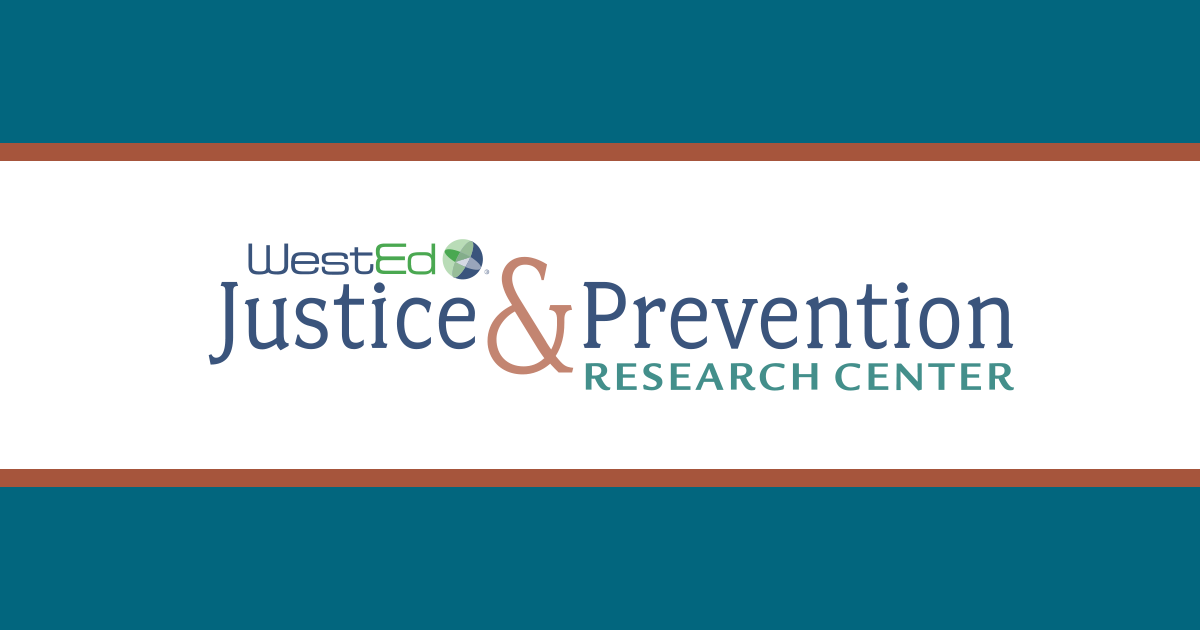Addressing Disparities: Native Americans in the Justice System – Insights from Judge William Thorne
Posted on

This post was originally published by WestEd’s Justice and Prevention Research Center (JPRC).
Native or Indigenous persons are overrepresented in justice system involvement. For example, Indigenous persons are disproportionately overrepresented at each stage of the system process, including arrest and incarceration, whether juvenile or adult. Despite progress in reducing the total number of incarcerated populations, the overrepresentation of Native and Indigenous persons in the system, particularly when compared to white persons, remains resilient. How can these disparities for Native persons be addressed?
To answer this and other questions, we asked William Thorne, retired Utah Court of Appeals Judge and a member of the Pomo/Coast Miwok Tribe, to respond. Judge Thorne is a member of the WestEd Board of Directors and serves on the Board of Trustees for the National Council of Juvenile and Family Court Judges. In 2016, Judge Thorne was presented with the Distinguished Service Award by the National Center for State Courts. You can learn more about his reputation and years of service from an article marking his retirement from the courts.
 What impact did structural racism have on you as a Native/Indigenous person growing up?
What impact did structural racism have on you as a Native/Indigenous person growing up?
I grew up in a small town in Northern California where my mom taught us what we had to do daily. She told us we had to be at least two to three times better than others to succeed. She also used to make us do things like this (and we didn’t understand at the time, but I do now): Mom made us empty our pockets out in the car before we went into stores so nobody would ever accuse us of taking something. That was the background that we grew up with. You felt like you were always on stage, and somebody was always watching. My mother told us that you could never assume that somebody wasn’t paying attention to what you were doing at all times.
What do you believe are the causes of the deep disparities by which Native persons are involved in the justice system at much higher rates than their proportion of the population?
There are several factors, but one overlooked cause is the law itself. For example, if a Native commits a crime on an Indian Reservation, it becomes a federal offense. And the federal guidelines are much harsher than state guidelines. If a Native American and a non-Native person commit a burglary together, the non-Indian would go to state court whereas the Native/Indigenous person would be tried in federal court. And assuming they are both convicted, the federal sentencing guidelines are much harsher than the state guidelines. Well, that in and of itself can explain some of the disproportionality between the two groups in terms of statutes and how that needs to be modified.
There are also concerns about the demographic composition of juries as well as cultural factors that dictate that a person must admit to wrongdoing (rather than plead not guilty and await a trial) and economic factors that limit the resources available to post bond—many homes on reservations do not have “titles” that permit a bondsman from issuing a bond in reliance on the property to guarantee appearance or even hire attorneys. Other factors include the lack of family support structures that would be easily recognizable to persons deciding upon appropriate sentencing terms, lack of cross jurisdictional agreements to monitor probation, etc.
What can policymakers and criminal justice professionals do, if anything, to mitigate these disparities?
I think there are choke points in the system where there is tremendous discretion that officials have. For example, law enforcement has the discretion to let somebody go with a warning as opposed to arresting them. Prosecutors have the discretion to charge and how high to pile the charges and then whether to plea bargain those down, for example, to a single charge or a deferred prosecution. That kind of discretion is immense, and nobody tracks that, at least that I’ve ever seen.
Judges’ decisions about sentencing, even if you have strict guidelines, there’s still room to depart for certain good cause. But that good cause again is based on White middle income norms and values, so that you don’t measure the activity or the strength of the individual or extended family. As policymakers and criminal justice professionals, we need to take into consideration the nuclear family and the extended family and community with its overall strengths as vehicles for healing.
Are there innovative strategies in the tribal justice system that the U.S. justice system needs to learn from?
I have a friend who runs a child welfare program for Native Americans, and she’s trained her workers to ask not “what’s wrong with you?” but “what’s strong with you?” We can build on those strengths and fill the gaps by not embracing a deficit orientation and take the strengths that Native Americans have into account.
From my experience, and I don’t know each part of the system, I know there are successes in Native communities in different places. Nobody shares that information or that knowledge. An example is a program run by Native Americans that went from 487 kids in foster care down to single digits. This program is called “My Two Aunties,” and in tribal communities, your auntie is somebody who put their arm around you, fed you, washed your clothes, made sure you had a warm place to sleep, but also was not afraid to grab you by the ear and shake her finger in your face if that’s what you need. Somebody who’s on your side, somebody who will call you to account, but you know has your back.
If we could figure out how to do that … to treat people as if they’re our relatives and not as strangers. One of the things in the non-Native system is fairness is measured by treating everybody at arm’s length—that is, treat them all the same. Well, in tribal communities, we’re taught to treat everybody as if they are family. You’re invested in their success. You’re not just going to quote strict sentences but give them a fair chance. You’re going to do whatever you can to help them succeed. Not a free pass. But what is it going to take to help you succeed. I have a friend who runs a child welfare program for Native Americans, and she’s trained her workers to ask not “what’s wrong with you?” but “what’s strong with you?” We can build on those strengths and fill the gaps by not embracing a deficit orientation and take the strengths that Native Americans have into account.
That may be Pollyanna. But I think that has the basis of saying here’s how you succeed at a local level. We find programs, people’s stories of success, and we start to pull it out and learn from it. Discover the factors that work and then share. Most of the people who work in the system (at least in the in the child welfare system) aren’t doing it for the money, prestige, or high pay. They do it because they want to help, but we need to empower them to help and not just be another cog in a system.
What can JPRC do to move the needle in directions beneficial to Native Americans?
JPRC is helping to move the needle by highlighting this need and engaging in its research work. I applaud your team for conducting the studies you do, and I always look forward to the results.
Sign up to receive news from WestEd’s Justice and Prevention Research Center. Visit jprc.wested.org.
